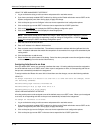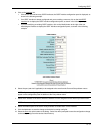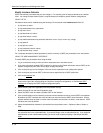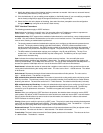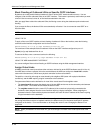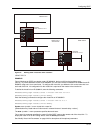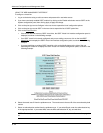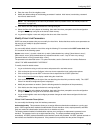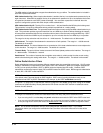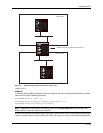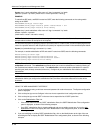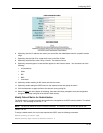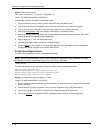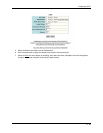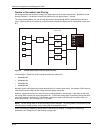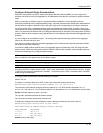
Advanced Configuration and Management Guide
The MD5 method of authentication encrypts the authentication key you define. The authentication is included in
each OSPF packet transmitted.
MD5 Authentication Key: When simple authentication is enabled, the key is an alphanumeric password of up to
eight characters. When MD5 is enabled, the key is an alphanumeric password of up to 16 characters that is later
encrypted and included in each OSPF packet transmitted. You must enter a password in this field when the
system is configured to operate with either simple or MD5 authentication.
MD5 Authentication Key ID: The Key ID is a number from 1 – 255 and identifies the MD5 key that is being used.
This parameter is required to differentiate among multiple keys defined on a routing switch.
MD5 Authentication Wait Time: This parameter determines when a newly configured MD5 authentication key is
valid. This parameter provides a graceful transition from one MD5 key to another without disturbing the network.
All new packets transmitted after the key activation wait time interval use the newly configured MD5 Key. OSPF
packets that contain the old MD5 key are accepted for up to five minutes after the new MD5 key is in operation.
The range for the key activation wait time is from 0 – 14400 seconds. The default value is 300 seconds.
Hello Interval: The length of time between the transmission of hello packets. The range is 1 – 65535 seconds.
The default is 10 seconds.
Retransmit Interval: The interval between the re-transmission of link state advertisements to router adjacencies
for this interface. The range is 0 – 3600 seconds. The default is 5 seconds.
Transmit Delay: The period of time it takes to transmit Link State Update packets on the interface. The range is
0 – 3600 seconds. The default is 1 second.
Dead Interval: The number of seconds that a neighbor router waits for a hello packet from the current routing
switch before declaring the routing switch down. The range is 1 – 65535 seconds. The default is 40 seconds.
Define Redistribution Filters
Route redistribution imports and translates different protocol routes into a specified protocol type. On HP routing
switches, redistribution is supported for static routes, OSPF, RIP, and BGP4. When you configure redistribution
for RIP, you can specify that static, OSPF, or BGP4 routes are imported into RIP routes. Likewise, OSPF
redistribution supports the import of static, RIP, and BGP4 routes into OSPF routes. BGP4 supports redistribution
of static, RIP, and OSPF routes into BGP4.
NOTE: The routing switch advertises the default route into OSPF even if redistribution is not enabled, and even
if the default route is learned through an IBGP neighbor. IBGP routes (including the default route) are not
redistributed into OSPF by OSPF redistribution (for example, by the OSPF redistribute command).
In Figure 8.7 on page 8-25, an administrator wants to configure the HP 9308M routing switch acting as the ASBR
(Autonomous System Boundary Router) between the RIP domain and the OSPF domain to redistribute routes
between the two domains.
NOTE: The ASBR must be running both RIP and OSPF protocols to support this activity.
To configure for redistribution, define the redistribution tables with deny and permit redistribution filters.
• If you are using the CLI, use the deny and permit redistribute commands for OSPF at the OSPF router level.
• If you are using the Web management interface, click on the plus sign next to Configure in the tree view, click
on the plus sign next to OSPF, then select the
Redistribution Filter
link from the OSPF configuration sheet.
NOTE: Do not enable redistribution until you have configured the redistribution filters. If you enable
redistribution before you configure the redistribution filters, the filters will not take affect and all routes will be
distributed.
8 - 24



